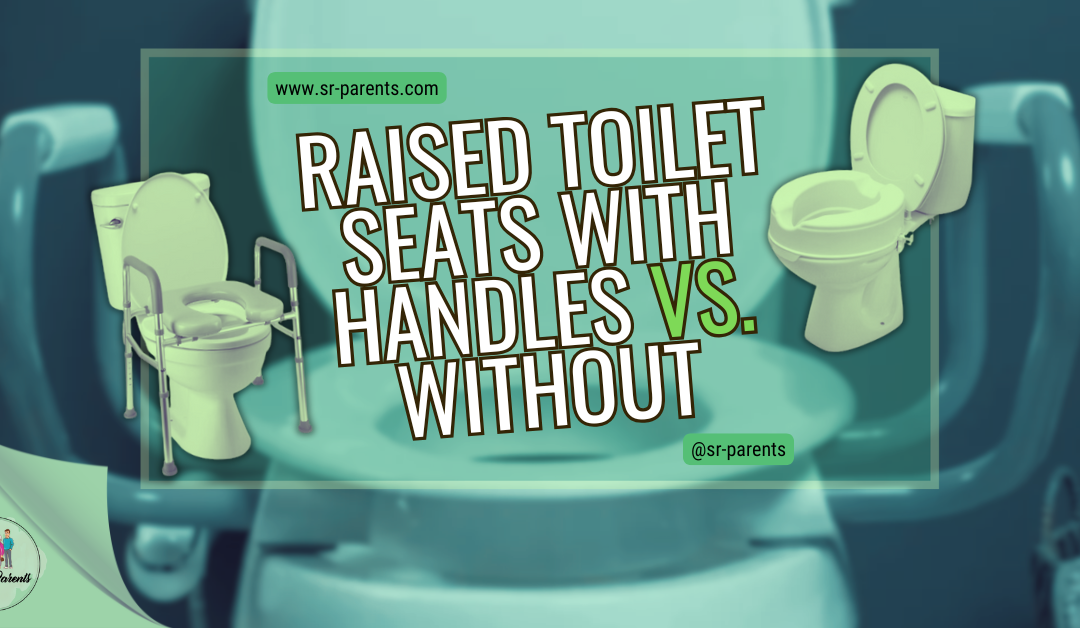When I first explored raised toilet seats, I quickly realized how life-changing they can be for anyone dealing with mobility challenges or recovering from surgery. It’s not just about the added height—about the confidence and independence they bring to a simple daily task. But as I dug deeper, I discovered a key choice that wasn’t so simple: raised toilet seats with handles versus those without. Each option has unique benefits; picking the right one can make a huge difference in safety and comfort.
If you’ve ever felt unsure about which type to choose, you’re not alone—I’ve been there. I’m sharing what I’ve learned to help you make the best decision for yourself or a loved one. In this article, we’ll dive into the pros and cons of both styles, how to match them with your specific needs, and a few things I wish I had known earlier. By the end, you’ll have all the information you need to confidently select the perfect option for your bathroom.
Contents
Raised Toilet Seats with Handles vs. Without: Comparing Safety & Comfort for Elderly Care
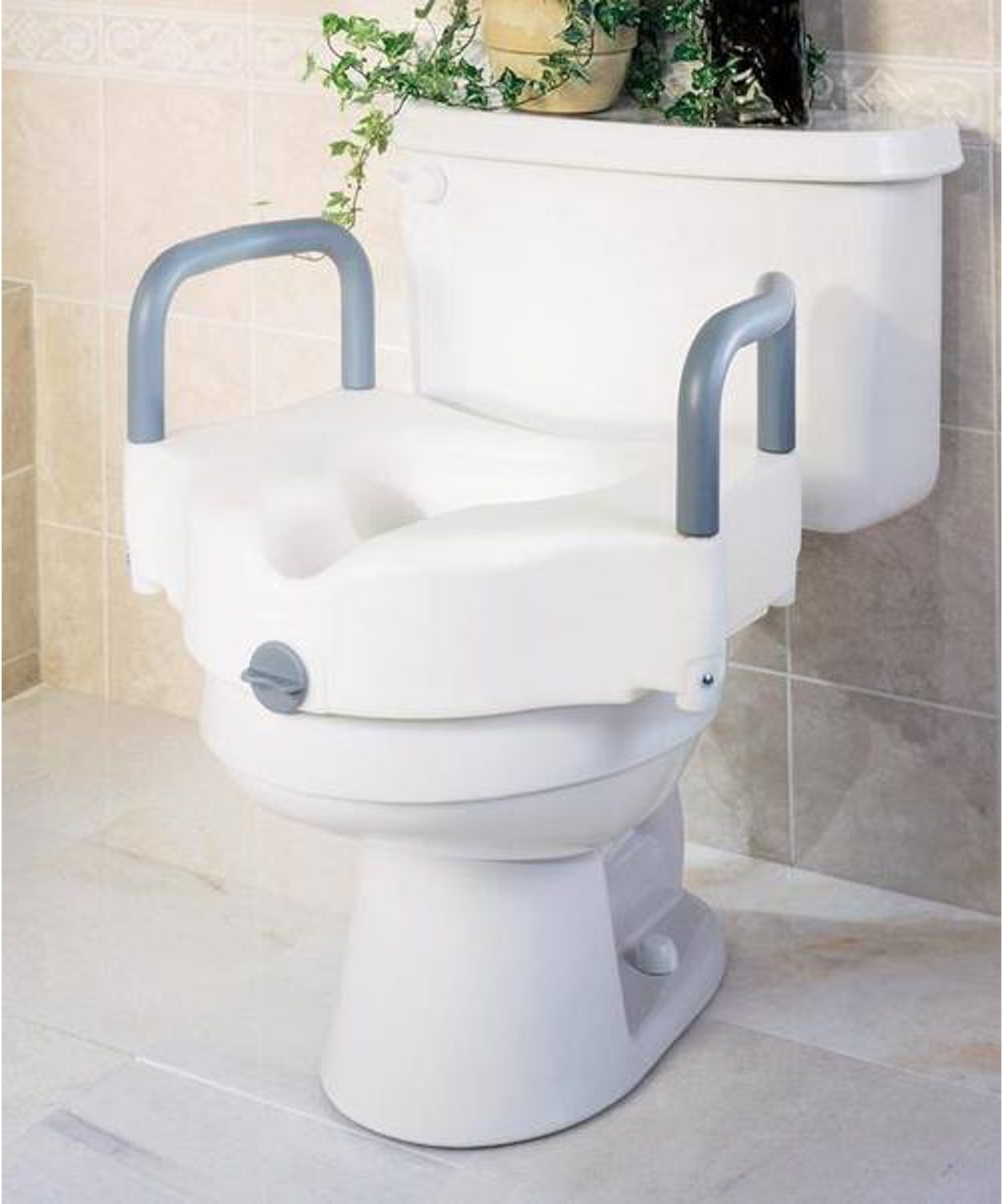
As senior parents navigate the challenges of mobility and independence, raised toilet seats emerge as a practical enhancement to their daily routine. Choosing between raised toilet seats with handles and those without is pivotal for safety and comfort.
Seats with handles support users who need extra help with balance, sitting down, or standing up. On the other hand, seats without handles offer a simpler design that may fit better in a smaller bathroom and can be easier to clean. It’s important to assess the individual needs of senior parents to determine the best type of raised toilet seat.
Factors such as physical strength, balance, bathroom space, and personal preference play critical roles in this decision. Adding a raised seat can significantly affect a senior’s ability to use the bathroom independently and with dignity.
Key Takeaways
- Raised toilet seats enhance bathroom safety and independence for seniors.
- Seats with handles offer additional support, while those without are simpler to maintain.
- Choosing the right type depends on individual needs, including balance and bathroom space.
Importance of Raised Toilet Seats for Seniors
Raised toilet seats play a crucial role in enhancing bathroom safety and independence for elderly individuals. As mobility decreases with age, performing simple tasks, such as sitting down and standing up from a standard toilet, can become challenging and pose a fall risk.
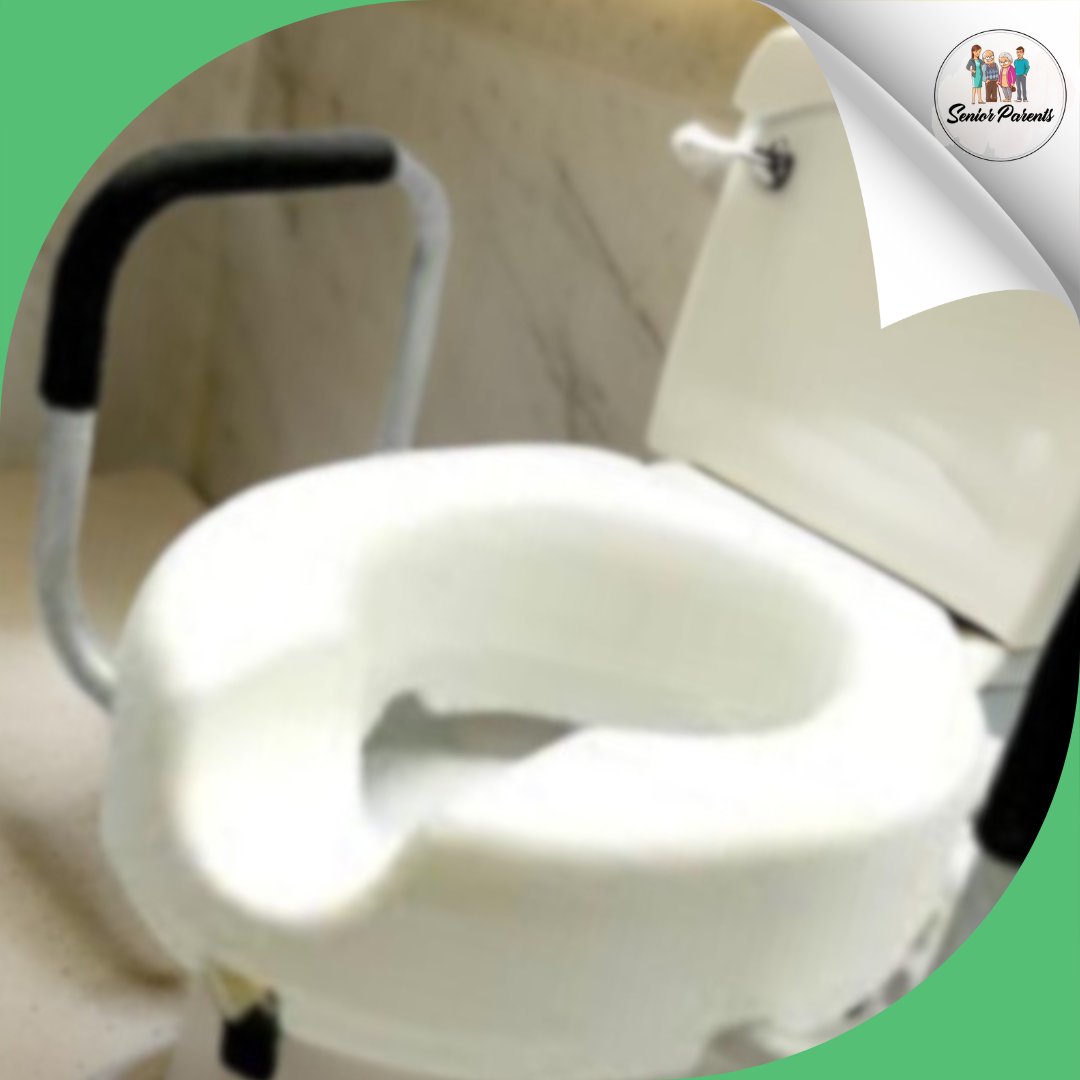
Safety and Accessibility
- Reduced Risk of Falls: Raised toilet seats lessen the distance seniors have to move, making it easier to sit down and stand up.
- Support for Joint Pain: Arthritis and other joint issues can make it painful to lower oneself. A raised seat minimizes the strain on knees and hips.
Comfort and Usability
- Ease of Transfer: Handles and added height provide leverage, aiding balance during transfers to and from the toilet.
- Comfortable Positioning: Elevated seats can help maintain a comfortable posture, reducing strain on the body.
Autonomy and Confidence
- Enhanced independence helps maintain a senior’s dignity and confidence, contributing positively to mental well-being.
Something Interesting:
Selecting the right raised toilet seat depends on the individual’s needs—those with ample upper body strength may prefer seats without handles. In contrast, seniors with stability concerns might find handles invaluable.
Watch this video about high toilet seats for the elderly.
By: Best Osmosis Experts | Home Improvement Tips
Raised Toilet Seats with Handles
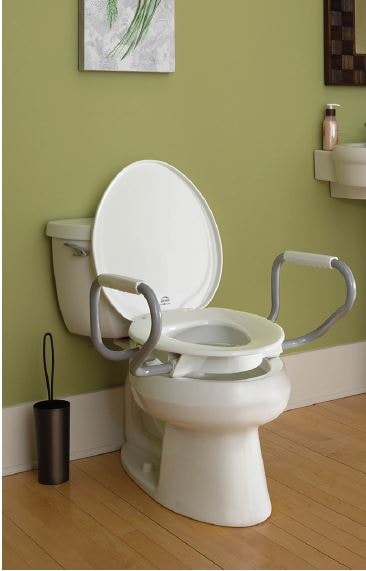
Raised toilet seats with handles provide stability and support, making bathroom visits safer and more comfortable for seniors. They are especially beneficial for those with limited mobility or balance issues.
Benefits
- Enhanced Safety: The handles offer additional support, reducing the risk of falls when seniors sit down or stand up from the toilet.
- Increased Independence: With the extra leverage from handles, seniors can more easily maneuver without assistance, fostering independence in the restroom.
Potential Drawbacks
- Space Requirements: These seats can take up more room, potentially making them unsuitable for small bathrooms.
- Cleaning Difficulty: The presence of handles might complicate the cleaning process, as there are more crevices and components to sanitize.
Toilet Seats without Handles
Raised toilet seats without handles offer a simple solution for seniors who need extra height but might not require the additional support offered by handles.
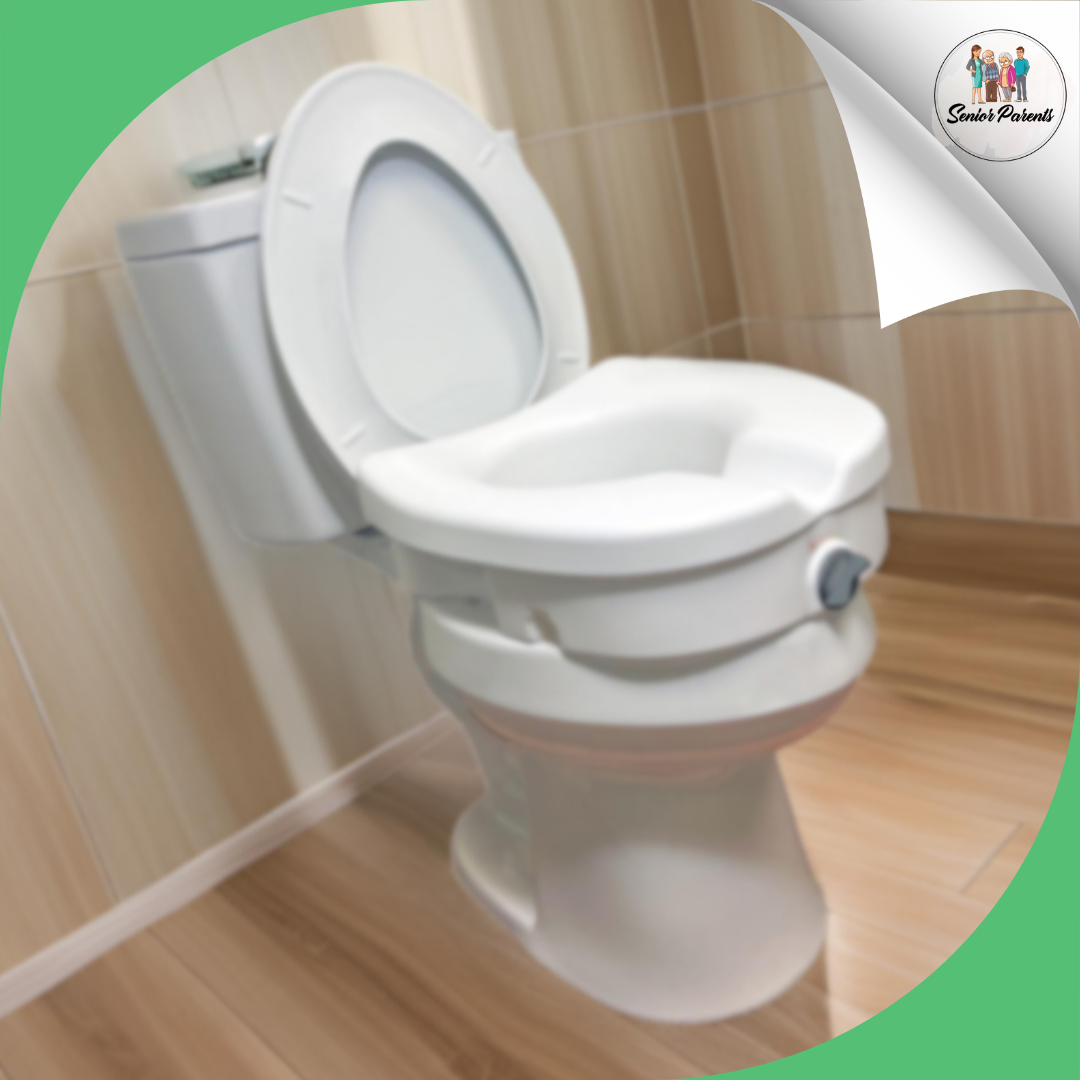
Advantages
- Ease of Cleaning: These seats are typically easier to clean without handles as there are fewer nooks and crannies where bacteria can hide.
- Aesthetic Appeal: Many find seats without handles less obtrusive and maintain the bathroom’s original look.
- Ease of Transfer: For seniors with more mobility, the lack of handles can make transferring on and off the seat easier from various angles.
Possible Disadvantages
- Reduced Stability: The absence of handles can lead to decreased stability, which may pose a challenge for those who rely on them for balance and support.
- Compatibility Issues: Some raised toilet seats without handles might not fit all toilets perfectly, leading to potential instability or movement.
Factors to Consider When Choosing a Toilet Seat for Seniors
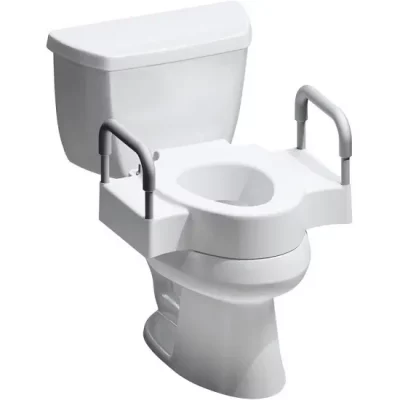
When selecting a toilet seat for seniors, it’s crucial to evaluate their needs in mobility, safety, and comfort.
Mobility Concerns
A raised toilet seat with handles can make a significant difference for seniors with limited mobility. The added height decreases the distance they must lower themselves, which can help avoid bending the knees excessively and reduce pain.
The choice of height should be tailored to their specific leg length and strength, as a mismatch can hinder their ability to sit down or stand up independently.
Safety and Stability
Safety is paramount when accommodating a senior’s needs. A toilet seat that provides enhanced stability can prevent slips and falls—an important consideration for those with balance issues.
The presence of handles and the material of the seat itself should be non-slip, and the seat must be easy to install and remove, ensuring it remains secure during use. One should also ensure the toilet seat is compatible with the existing bathroom fixtures to avoid potential safety risks.
Comfort and Ease of Use
Finally, comfort shouldn’t be overlooked. A contoured, padded seat can provide additional support and alleviate pressure points. The design should facilitate easy cleaning and maintenance, ensuring hygiene isn’t compromised. Some models offer oval or round designs to better fit different toilet bowl shapes, catering to the senior’s comfort and the bathroom’s configuration.
Installation and Maintenance of Raised Toilet Seats
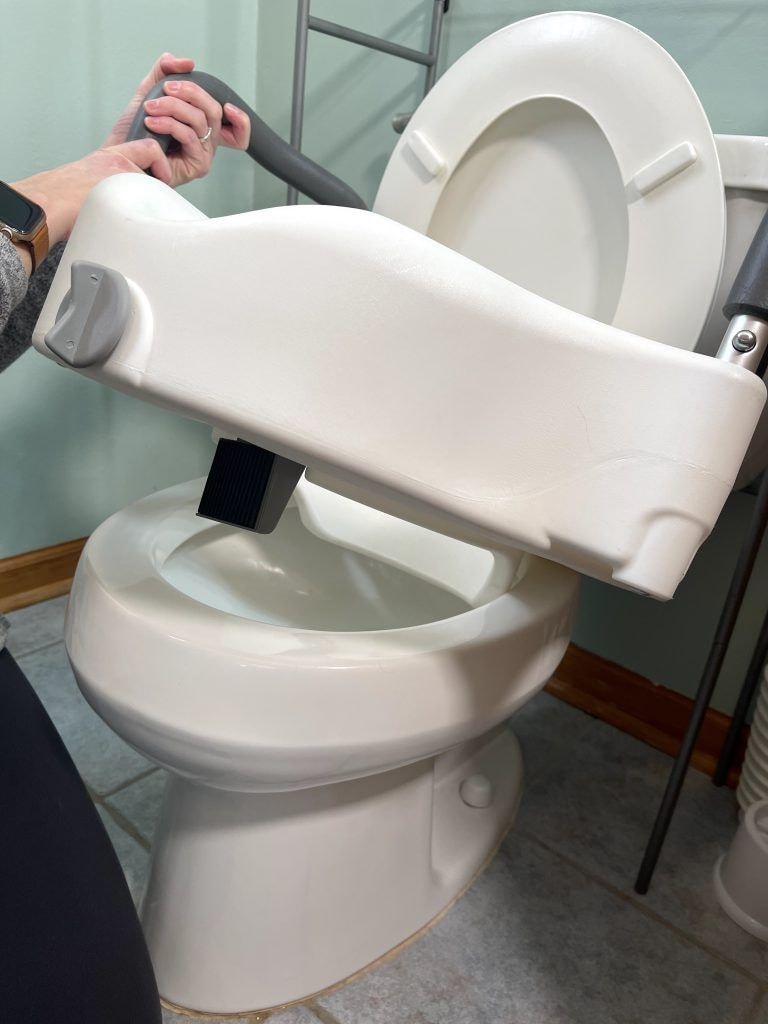
Installation The process of installing a raised toilet seat often varies depending on the product design. Many raised toilet seats with handles require no tools for installation, allowing for a secure, snug fit by adjustable front clamps or side grips. These may offer additional stability, but compatibility with the existing toilet dimensions needs to be checked.
For seats without handles, the installation may involve aligning the seat to the toilet bowl and securing it with existing toilet seat bolts. Some models are hinged, like the Drive Medical Hinged Toilet Seat Riser, to aid in cleaning and allow the user to use the toilet more traditionally.
| Maintenance Task | With Handles | Without Handles |
|---|---|---|
| Cleaning | Requires disassembly to clean nooks and crannies where the handles attach to the seat. | Often easier to clean due to fewer crevices and a simpler design. |
| Inspection | Regular check for handle stability is necessary to ensure safety. | Bolted connections should be checked periodically to prevent loosening. |
| Adjustments/Repairs | May need tools to adjust or tighten handles over time. | Typically requires only a screwdriver for any adjustments or to replace the seat. |
User Reviews and Recommendations
User feedback provides invaluable insights when considering the advantages of raised toilet seats with handles. They collectively highlight the ease of use and added stability that handles offer. For senior parents with mobility issues, the handles assist with both sitting down and standing up.
With Handles
- Safety: Often recommended for those with balance or strength challenges.
- Independence: Helps users maintain autonomy in personal hygiene.
- Support: Particularly beneficial for seniors recovering from surgery.
Without Handles
- Space-saving: Preferred in tighter bathroom spaces.
- Cleaning: Easier to maintain due to fewer crevices.
- Aesthetics: Less clinical appearance, which some users prefer.
Users emphasize the importance of weight capacity and stability. For example, Carex toilet seat risers are well-regarded for supporting up to 300 pounds. Meanwhile, according to Livestrong’s evaluation, Bemis’ options are highlighted for their high weight capacity.
Product recommendations are often specific to user circumstances. Those prioritizing mobility and safety typically favor seats with handles, while those focusing on space and aesthetics might opt for models without. Installation ease and comfort are also key factors. For instance, Vive Health Raised Toilet Seats garnered positive comments about easy installation and contoured design.
Final Verdict on the Best Choice for Your Senior Parent
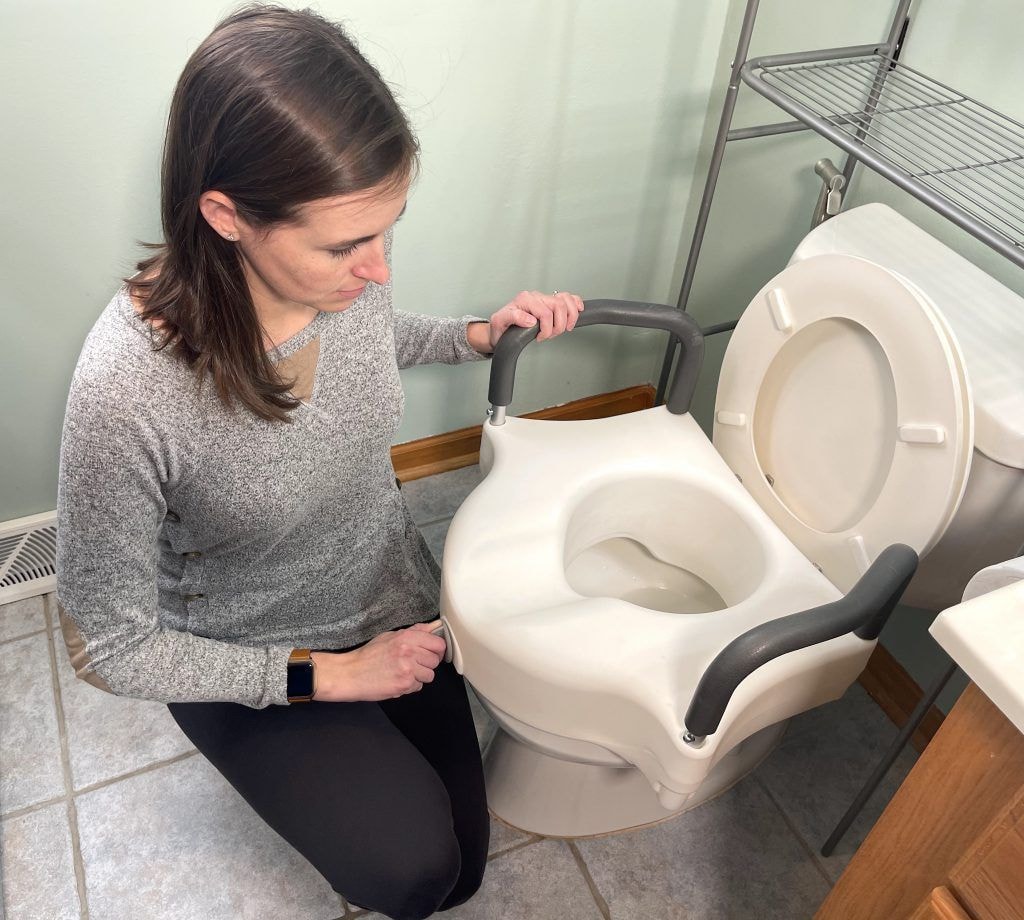
When deciding between raised toilet seats with handles and those without, one should consider their senior parent’s specific needs and abilities.
With Handles
- Raised toilet seats with handles provide additional support, making them suitable for seniors with balance or mobility issues.
- The RMS raised toilet seat is an example that offers handles to prevent knee bending and reduce pain.
- Safety: Handles can reduce the risk of falls during transfers to and from the toilet.
Without Handles
- Space-Saving: Seats without handles are less bulky and may fit better in smaller bathrooms.
- Ease of Cleaning: These seats are often easier to clean without the extra components.
| Consideration | With Handles | Without Handles |
|---|---|---|
| Stability | High | Moderate |
| Safety | Better for those at fall risk | Good with caution |
| Space | Requires more room | More compact |
| Cleaning | More challenging with handles | Simpler |
| Independence | Promotes confidence in movement | Suitable for those with more mobility |
For seniors with limited mobility or at high risk of falls, a raised toilet seat with handles like the Drive Medical Raised Toilet Seat could be the best choice. On the other hand, if the senior has a smaller bathroom space, maintains a higher level of mobility, and does not require additional support, a raised toilet seat without handles could suffice. When deciding, caregivers should assess the senior’s needs, bathroom space, and personal preferences.
Check out this video to learn about the best toilet seat riser options.
By: EquipMeOT
Choosing the Best Raised Toilet Seat: With Handles vs. Without
Choosing between a raised toilet seat with handles and one without really comes down to individual needs, and I’ve found that it’s a decision worth considering carefully. If you or a loved one needs extra support for balance or stability, the raised toilet seat with handles can offer added security and independence. On the other hand, if you prefer a simpler design or are working with limited bathroom space, the seat without handles might be the better option.
Ultimately, the goal is to improve safety and comfort. I’ve learned that assessing your needs, whether mobility, space, or ease of cleaning, plays a huge role in making the right choice. By taking all these factors into account, I’m confident you’ll be able to find the perfect raised toilet seat to make daily bathroom visits safer and more comfortable for you or your loved ones.
Frequently Asked Questions
Choosing the right raised toilet seat is crucial for ensuring the safety and comfort of seniors. This section addresses common inquiries regarding the different features and considerations when selecting a raised toilet seat for an elderly individual.
What Are the Disadvantages of Using a Raised Toilet Seat for Seniors?
Some disadvantages include difficulty fitting the seat securely, which might lead to instability, and challenges in using the raised seat for seniors with specific mobility or balance issues. For some individuals, the aesthetic and psychological acceptance of such aids can also be a concern.
How Does a Raised Toilet Seat With Arms Compare to One Without in Terms of Stability for Seniors?
A raised toilet seat with arms typically provides additional stability for seniors. The arms support users to grip, which helps maintain balance and distribute weight evenly while transferring to and from the seat.
At What Point Should a Senior Consider Switching to a Raised Toilet Seat?
Seniors should consider switching to a raised toilet seat when they begin experiencing difficulty sitting down or getting up from a standard toilet, often due to limited mobility, joint pain, or balance issues.
Which Type of Raised Toilet Seat is More Beneficial for Seniors With Limited Mobility?
For seniors with limited mobility, a raised toilet seat with handles can be more beneficial as it provides additional support for sitting and standing. This type is particularly helpful for those who rely on arm strength to compensate for lower body weaknesses.
Is There a Difference in Ease of Cleaning Between Raised Toilet Seats With and Without Handles?
Yes, raised toilet seats with handles may have more nooks and crannies that require cleaning, making them slightly more challenging to maintain than those without handles. However, most models are designed with materials and surfaces that are easy to wipe down.
Stay Connected with Us
Are you eager to embark on a journey of support and knowledge? Join us on social media for inspiring content, professional advice, and vital tips for assisting seniors!
? Website: Visit sr-parents.com for comprehensive articles and resources on senior health, wellness, and care.
? Pinterest: Find helpful caregiving advice, home solutions, and senior-friendly activities at pinterest.com/seniorparents.
? Facebook: Join our caring community at facebook.com/sr.parents. Connect with fellow caregivers, share experiences, and gain inspiration.
? Twitter: Follow us at twitter.com/senior_parents for the latest news, updates, and discussions on senior care.
? Instagram: Discover heartwarming moments, caregiving tips, and a glimpse into senior life at instagram.com/seniorparents.
Stay connected, motivated, and informed with our newest stories and expert articles on senior care.

